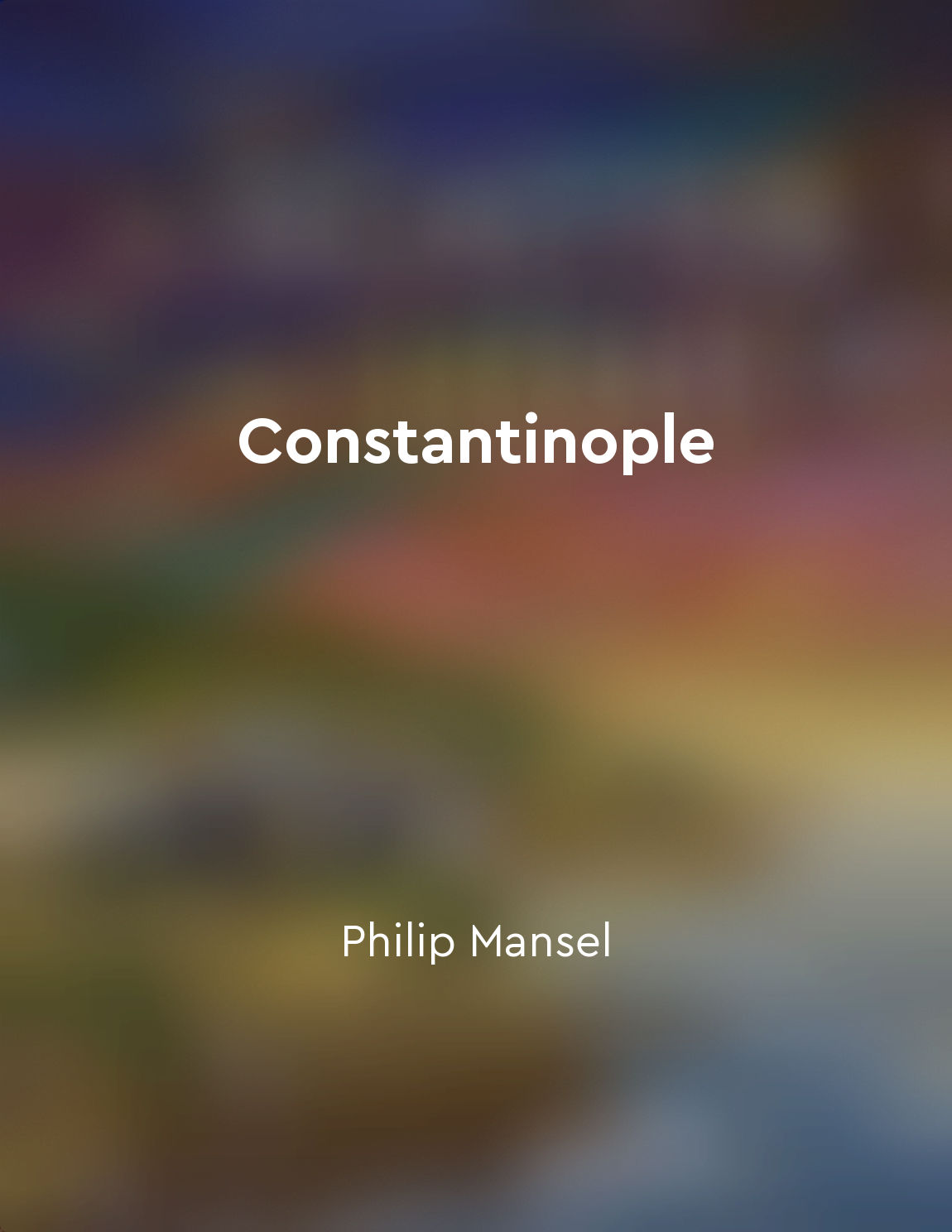Religious center from "summary" of Constantinople by Philip Mansel
The religious center of Constantinople was a key element of the city's identity. As the capital of the Byzantine Empire, Constantinople was not only a political and economic hub but also a spiritual focal point. The city was home to numerous churches, monasteries, and religious institutions that played a central role in the daily life of its inhabitants. The Hagia Sophia, in particular, was the most iconic religious building in Constantinople. Originally built as a Christian cathedral, it later served as a mosque after the Ottoman conquest of the city. The Hagia Sophia's impressive dome and intricate mosaics reflected the city's status as a religious center where faith and art intertwined. Apart from the Hagia Sophia, Constantinople was also known for its numerous monasteries and churches dedicated to various saints. These religious institutions were not only places of worship but also centers of learning and culture. The city's religious leaders, such as the patriarch of Constantinople, wielded significant influence over both spiritual and secular matters. The religious center of Constantinople was not limited to Christianity. The city also had a significant Jewish and Muslim population, each with their own religious institutions and practices. This diversity of faiths added to the city's cosmopolitan character and made it a melting pot of different cultures and beliefs.- The religious center of Constantinople played a crucial role in shaping the city's identity and defining its place in the wider world. The city's religious buildings, leaders, and practices were all integral to its cultural and spiritual life, making Constantinople a truly unique and vibrant center of faith.


